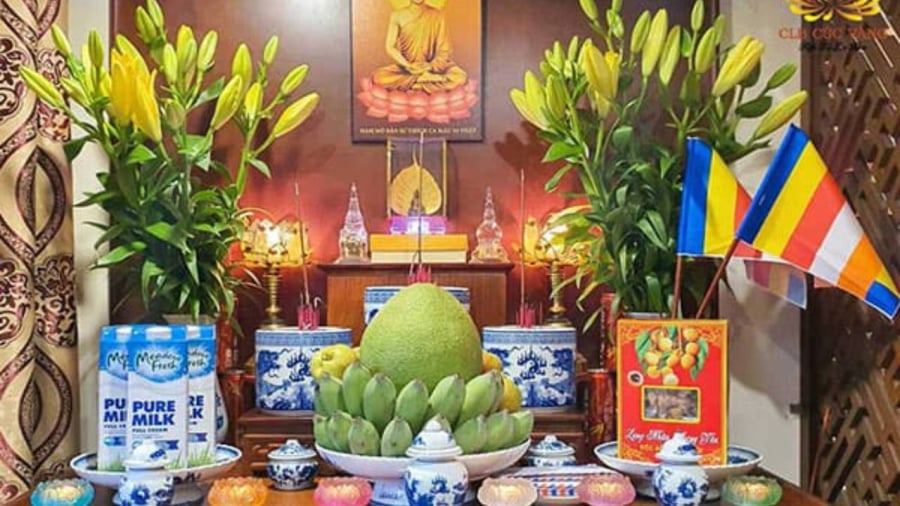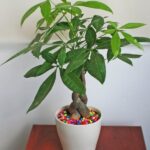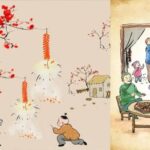Why Place a Flower Vase on the Ancestral Altar?
The ancestral altar is a sacred space, connecting the living descendants with their ancestors in the spiritual realm. Preparing and arranging offerings on the altar holds not only spiritual significance but also directly impacts the fortune and luck of the family.
Each item on the altar holds a specific meaning and follows certain placement rules. Among them, the flower vase is an essential offering, helping to gather and preserve the positive energy from heaven and earth. When placing the flower vase on the ancestral altar, it is crucial to arrange it correctly, following customs, feng shui principles, and aesthetic considerations.

Why Place a Flower Vase on the Ancestral Altar?
The flower vase, also known as a lộc bình, is usually smaller in size. Placing the flower vase on both sides of the altar creates a sense of solemnity and dignity for the worship space. The flowers offered in the vase symbolize freshness and express the family’s reverence for their ancestors and deities.
In addition to gathering positive energy, the flower vase also contributes to a cleaner and more majestic worship space. The custom of placing a flower vase on the altar brings good fortune, blessings, prosperity, and wealth to the family. The fragrance of fresh flowers adds a touch of vitality and freshness to the environment.
During special occasions, such as festivals or the first and fifteenth days of the lunar month, placing a flower vase on the altar is a must for every family. Fresh flowers or lotus flowers, symbolizing eternal beauty, can be chosen by the family.
Which Side of the Ancestral Altar Should the Flower Vase Be Placed?
The correct side for placing the flower vase on the ancestral altar is a matter of interest to many. Depending on the number of flower vases, there are appropriate placement methods as follows:
Single Vase (1 vase/bottle)
According to Vietnamese spiritual knowledge, our ancestors taught that the flower vase on the altar must follow a specific rule and cannot be placed haphazardly. If there is only one flower vase on the altar, it should follow the principle of “Đông bình Tây quả,” which means placing the flower vase on the East side and the fruit on the West side.
This arrangement of flowers and fruit on the altar has been passed down from ancient times as a way to show respect to our ancestors. It is based on the natural law that the sun rises in the East and sets in the West, and trees bear flowers before bearing fruit. Therefore, when setting up offerings, the flower vase should be placed in the East, and the fruit platter in the West, thus following the law of nature.
To determine the left and right sides of the altar based on the East-West orientation: from the perspective of the altar, the left side of the ancestors is the East (using the Han-Vietnamese word “tả,” meaning East), and the corresponding right side is the West. This has been the common belief from ancient times to the present.
If the ancestral altar faces south towards the main door, then the left side of the altar is East, and the right side is West. By placing the flower vase on the left (East) side, the scent of the flowers will spread throughout the altar space when the east or southeast wind blows. Placing the fruit plate on the right (West) side makes it convenient for displaying the five types of fruit and for the ancestors to use.
– Placing the flower vase in the East symbolizes the blooming of flowers in spring.
– The West symbolizes autumn, the season of fruit-bearing, representing the family’s wish for increased wealth, prosperity, and success for future generations.
Double Vases (2 vases/bottles)
If the ancestral altar has two flower vases, they can be symmetrically placed on both sides, with a flower basket in the center, in front of the incense burner. This arrangement maintains the spiritual significance while creating a sense of balance and freshness for the altar. The size and number of flower vases may vary depending on the size of the altar, family customs, and the specific spiritual practices. The essential aspect is to follow the customs and create an appealing arrangement.
Placing a flower vase on the ancestral altar carries spiritual significance and adds solemnity and freshness to the worship space. Understanding and adhering to the rules of arranging offerings will bring good fortune, blessings, prosperity, and wealth to the family.
The 3 Sounds of Prosperity: A Home That Echoes With Wealth, Where Each Generation Surpasses the Last
“Hearing these sounds in your home brings good fortune and blessings. It is a sign of a prosperous and fortunate household. These unique and special auditory experiences are an indication of good luck and positive energy within your living space.”
The Three Nose Types That Bring Wealth and Success: A Man’s Fortune Unveiled
“Unveiling the Secrets of Success: The Power of a Man’s Nose in Physiognomy”.
A man’s nose, believe it or not, holds mysterious power according to the ancient art of physiognomy. It is said that those blessed with a certain nasal structure are destined for a life of prosperity and luxury. But what exactly does this auspicious nose look like, and how can it shape one’s destiny? Prepare to unlock the secrets of success as we delve into the fascinating world of facial readings.



































